CASE STUDIES-4: Resp/Eye/Ear
1/9
There's no tags or description
Looks like no tags are added yet.
Name | Mastery | Learn | Test | Matching | Spaced |
|---|
No study sessions yet.
10 Terms
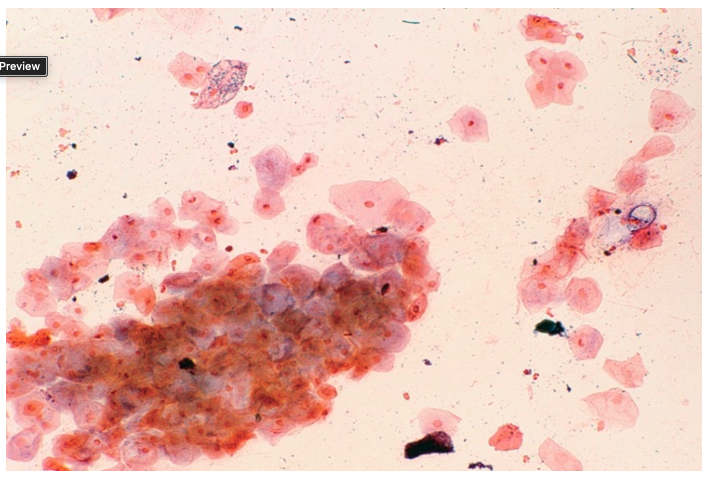
A sputum specimen is submitted from a 42-year-old male. The gram stain (25x) from this specimen:
What is the next best step for this specimen?
Plate the specimen only to sheep blood agar
Plate the specimen only to chocolate agar
Plate the specimen to sheep blood agar, MacConkey agar, and chocolate agar
Reject the specimen and request a new specimen
Reject the specimen and request a new specimen
Reject. This sputum specimen has >10 SEP/LPF.

A tracheal aspirate is submitted from a 78-year old male. The gram stain from this sample:
How would you interpret the gram stain (do not quantitative)?
How would you interpret the gram stain (do not quantitative)?
WBC and GNDC
WBC and GNCB
SEP and GNDC
WBC and GPC
WBC and GNDC

After 24 hours of incubation the culture results show:
BAP: many opaque, tan colonies
CHOC: many opaque tan colonies
MAC: no growth
The gram stain of the organism growing on the BAP & CHOC plate is consistent with the organism morphology seen on the direct specimen gram stain. (previous question). The organism pushes across the plate like a 'hockey puck'.
The next step is to perform a/an:
Porphyrin test and check for hemolysis on rabbit blood agar
oxidase and butyrate esterase test
oxidase and OF glucose
catalase and coagulase
oxidase and butyrate esterase test
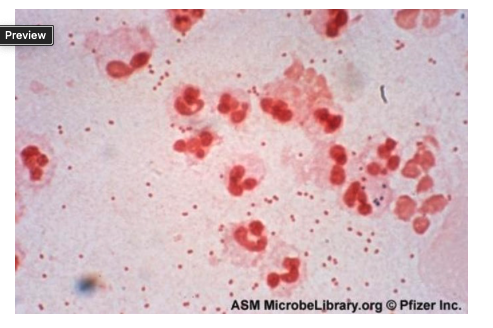
The tests in the previous question were both positive (oxidase and butyrate esterase test). What is the presumptive identification of the organism?
Staphylococcus aureus
Pseudomonas spp.
Haemophilus influenzae
Moraxella catarrhalis
Moraxella catarrhalis
Moraxella catarrhalis is a respiratory pathogen. It is GNDC, OX +, and Butyrate esterase +
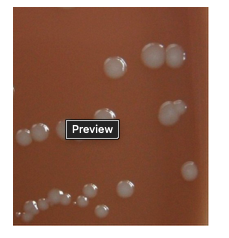
A sputum culture grows 2+ normal respiratory flora on the BAP and CHOC agar at 24 hours. It also grew 3+ colonies on the CHOC, but not on the BAP or MAC agar.
The colonies on CHOC are small to medium, tan and smooth. There is a mousy odor. A magnified image is seen below:
GS = GNCB
OX= neg/slow positive
The most likely identification of this isolate is:
Haemophilus spp.
Francisella spp.
Burkholderia spp
Pseudomonas spp.
Haemophilus spp.
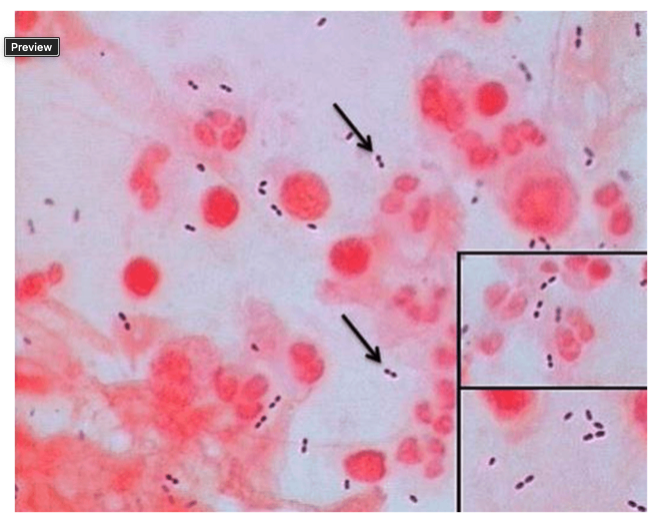
A 70 year-old woman with history of respiratory disease has been on a hospital ventilator for several days. She develops a fever and a increased purulent secretions are noted in her endotracheal tube. A sample is sent to the lab for respiratory culture.
How will you report the following gram stain from the sample and what organism do you suspect?
Gram positive bacilli; Corynebacteria spp.
Gram positive cocci in pairs; Streptococcus pneumoniae
Gram positive cocci in pairs; Staph. aureus
Gram positive bacilli; Clostridium spp.
Gram positive cocci in pairs; Streptococcus pneumoniae
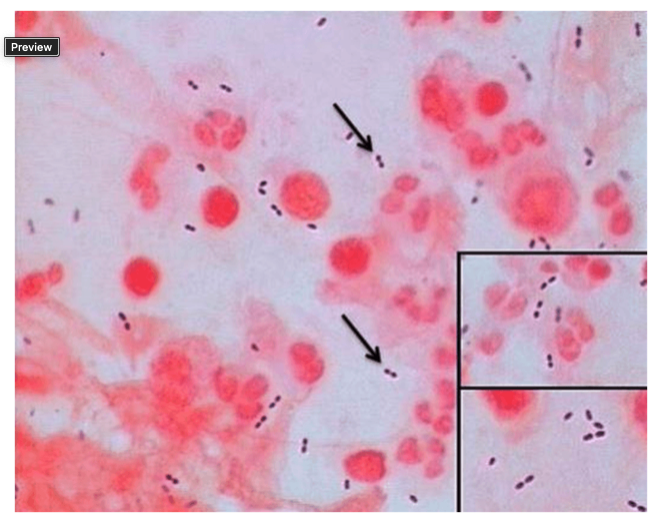
The culture above grew an alpha hemolytic gram positive cocci.
Optochin disk zone: 16mm.
What is the organism identification?
Erysipelothrix rhusiopathae
Corynebacterium species
Streptococcus viridans
Streptococcus pneumoniae
Streptococcus pneumoniae
A sputum from a 17-year old patient with cystic fibrosis is plated on mannitol salt agar (MSA). The MSA turns yellow where the colonies are growing.
Gram stain of colony: GPC
Catalase: Positive
Coagulase: Positive
The organism growing on the MSA agar is:
Burkholderia spp
Streptococcus pneumoniae
Stenotrophomonas maltophilia
Staphylococcus aureus
Staphylococcus aureus
A throat culture from a 6 year old child grows a small beta hemolytic colony on the blood agar plate.
Gram stain: small gram positive bacilli
Which of the following tests are needed to confirm identification of this organism?
oxidase and butyrate esterase
catalase and reverse CAMP
catalase and bile solubility
None of the above
catalase and reverse CAMP
A throat culture from a 6 year old child grows a small beta hemolytic colony on the blood agar plate.
Gram stain: small gram positive bacilli
Which of the following tests are needed to confirm identification of this organism?
What is your suspected pathogen for the organism described above?
Streptococcus pneumoniae
Moraxella catarrhalis
Arcanobacterium haemolyticum
Corynebacterium diptheriae
Arcanobacterium haemolyticum